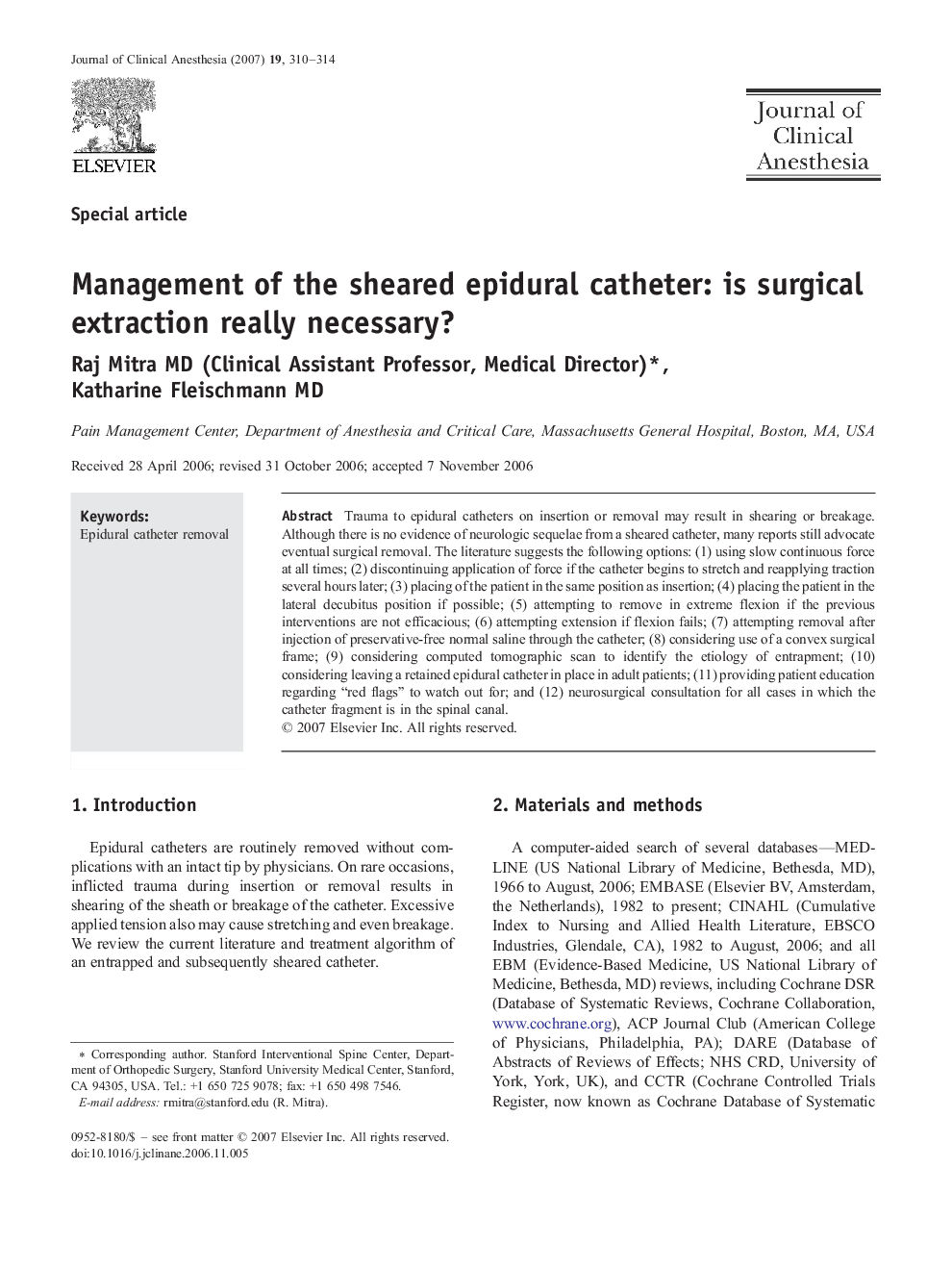| Article ID | Journal | Published Year | Pages | File Type |
|---|---|---|---|---|
| 2763984 | Journal of Clinical Anesthesia | 2007 | 5 Pages |
Trauma to epidural catheters on insertion or removal may result in shearing or breakage. Although there is no evidence of neurologic sequelae from a sheared catheter, many reports still advocate eventual surgical removal. The literature suggests the following options: (1) using slow continuous force at all times; (2) discontinuing application of force if the catheter begins to stretch and reapplying traction several hours later; (3) placing of the patient in the same position as insertion; (4) placing the patient in the lateral decubitus position if possible; (5) attempting to remove in extreme flexion if the previous interventions are not efficacious; (6) attempting extension if flexion fails; (7) attempting removal after injection of preservative-free normal saline through the catheter; (8) considering use of a convex surgical frame; (9) considering computed tomographic scan to identify the etiology of entrapment; (10) considering leaving a retained epidural catheter in place in adult patients; (11) providing patient education regarding “red flags” to watch out for; and (12) neurosurgical consultation for all cases in which the catheter fragment is in the spinal canal.
